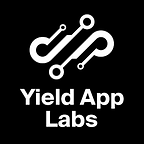The Fantom Network: A Ghost Story or Something More?
The Fantom Opera Network is an EVM-compatible Layer 1 smart contract platform that leverages a unique consensus mechanism with the intention of addressing concerns with other Layer 1 blockchains. Launching its mainnet in late December of 2019, it has since processed over 400 million transactions and hosts 4.47 million unique addresses. It hosts an ecosystem of 268 protocols, according to DefiLlama, that include both native projects and legacy DeFi protocols, such as Yearn and Curve Finance. Development has been piloted by the Fantom Foundation, led by CEO and CIO Michael Kong, since inception and has had contributions from the famous Andre Cronje and Professor Bernhard Scholz.
Lachesis protocol is the core engine and consensus mechanism behind Fantom Opera.
Lachesis uses a DAG-based asynchronous non-deterministic algorithm to achieve Asynchronous Byzantine fault tolerance (aBFT)
—Asynchronous Byzantine fault tolerance (aBFT)
The Foundation is pushing Fantom in a direction not typically taken by its competitors. For starters, their Lachesis consensus mechanism is an unique aBFT implementation of a consensus algorithm that allows for asynchronous transactions processed by independent nodes with 1 second finality.
Importantly, the Fantom Opera Network is not a blockchain. Similar to projects like Avalanche, Fantom is a Directed Acyclic Graph (DAG). In short, a DAG allows for multiple chains to exist and be intertwined if the information is flowing in the same direction. This eliminates block times and creates a system that is extremely scalable and cheap. Finally, current development is focused on innovating the EVM itself because it is the network’s current limiting factor.
— FVM: Fantom Virtual Machine
The Ethereum Virtual Machine (EVM), is the most used virtual machine in crypto due to it being extensively battle-tested. With the majority of alternative Layer 1 chains leveraging the EVM, the field of Layer 1’s are confined to very similar parameters.
The Fantom Foundation decided to innovate the EVM and create their own virtual machine, dubbed the Fantom Virtual Machine (FVM). With the help of Chief Research Officer Professor Bernhard Scholz, the team looks to transform the EVM into the FVM by:
- Accelerated block processing
- Parallel execution of transactions within the same block
- Optimizing smart contract reading
- Flat storage compaction and data locality
- Faster, more efficient databases
A research paper explaining FVM has been published by the Fantom Foundation.
— Fantom in the current Blockchain Landscape
Comparing this to Bitcoin and Ethereum’s blockchains, which require multi-block confirmation by all of the nodes and validators, Fantom’s consensus and architecture are demonstrably superior. So, why is it that everyone is talking about Ethereum and its Layer 2’s and not Fantom? Let’s explore how Fantom shapes up to the competition.
A majority of the Layer 1 and Layer 2 blockchains are EVM compatible, which means that they run the EVM as their designated virtual machine. With this in mind, we are going to loop together blockchains that are EVM compatible because they will all have the same max underlying metrics in terms of transactions per second and processing.
In this analysis, we will be comparing the reported transactions per second, the measured transactions per second, and the time to finality of various blockchains. Transactions per second (tps) can be interpreted as a measure of how much processing power is in the blockchain. Time to finality (ttf) is a measure of how long it takes a transaction to be final and irreversible.
Let’s take a look at the data so we can draw our conclusions:
Having these numbers to reflect upon, it is crazy how large the discrepancy between reported tps and measured tps look until we remember that this is a bear market. Block demand is very low and as a result, the number of transactions on various blockchains is extremely low. The measured tps can’t be very high if the volume doesn’t exist to measure it properly. With this in mind, Solana, followed by Fantom and Cosmos, are leading the charge in the race for more processing power.
Of the top 3 blockchains, only Fantom is EVM-compatible. Cosmos does not use the EVM for smart contract controls, preferring its own CosmWasm system for managing smart contracts. However, Cosmos does have an app chain, Evmos, that is EVM compatible. This allows an extended form of interaction between Cosmos and Ethereum DeFi. Solana is not currently EVM-compatible and relies on various bridges to enable DeFi between itself and Ethereum. However, a team from Neon Labs is developing an EVM for Solana which will allow Solana developers access to Ethereum tooling and Ethereum-based protocols access to the Solana ecosystem.
Closing Thoughts
The existence of the EVM, in some form, in almost every ecosystem should speak volumes to how dependent we are on it. We would go so far as to label it as a foundation of today’s blockchains. Fantom’s ability to keep pace with competitors that are not hindered by the EVM is a strong indicator of its overall potential. The Fantom Foundation’s innovation of the EVM into the FVM will do wonders for its processing power. In addition to the increased transaction throughput, optimizing gas usage, as well as more efficient data storage and processing, will transform the Fantom Network today into something users won’t recognize.
A Fantom without the random gas spikes, even faster processing, and even cheaper gas is a competitor that the Layer 1 blockchains of the future cannot ignore. These attributes, combined with an innovative virtual machine, will force investors, developers, and users to acknowledge Fantom or miss a large opportunity for the space.
Yield App Labs’ mission is to transform and enhance the Web3 landscape through collaboration with individuals and projects that share our vision of a decentralized future. Communications from Yield App Labs are intended solely for informational purposes, and should not be construed as investment, trading advice, or solicitation.
